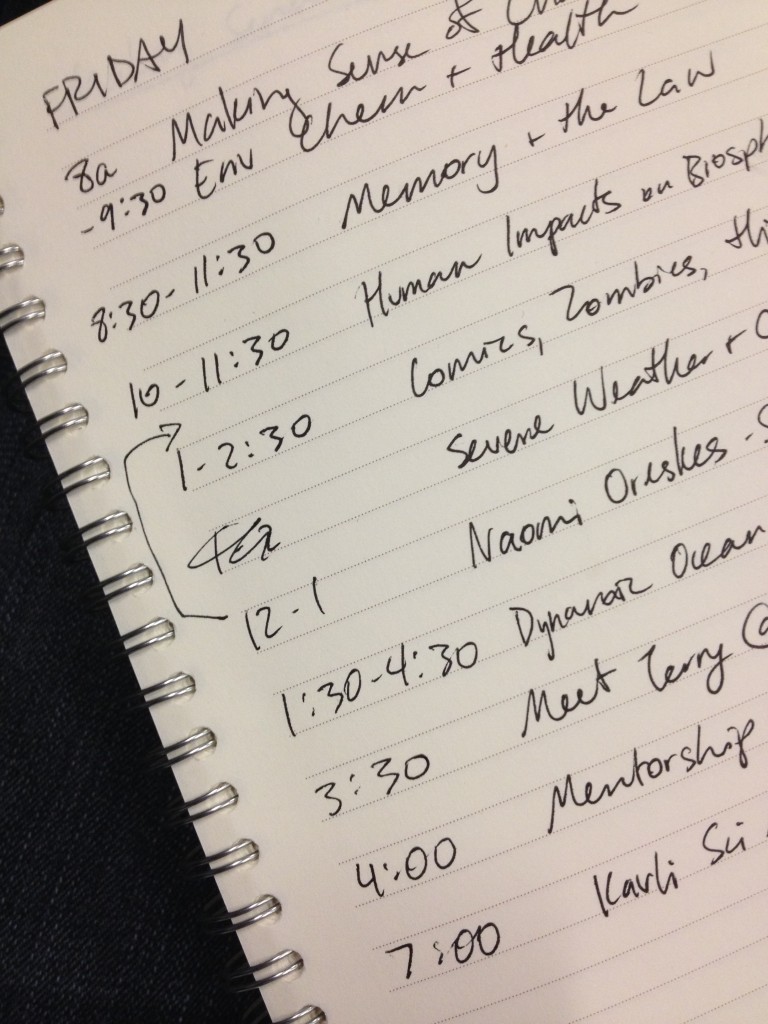Earlier this month I attended the annual meeting of the American Association for the Advancement of Science (AAAS) in sunny San Jose, CA. This is a giant conference that brings in researchers from around the world to speak on a wide range of topics, from global heath and renewable energy to astrophysics and computer science. There are more than 50 different talks every day, and as many as 10 or 20 going on at any given time. This leads to time-turner-required schedules like mine:
A recurring theme I noticed at this year’s conference was the importance of communicating science. Every year the conference includes Family Science Days, which are special exhibits meant to engage people of all ages. But this year there were also multiple talks every day that stressed the need for scientists to meaningfully engage the public in their work. This might be through lab blogs, out reach events, or citizen science projects such as those found on Zooniverse.
Many researchers are already doing this. Duke research labs participate in outreach through FEMMES, which engages 4th through 6th grade girls in hands-on STEM educational activities. Craig McClain, who spoke at the Communicating Conservation Symposium hosted by SNAP and DCS last fall, founded the Deep-Sea News blog in addition to his research on marine systems.
One of my favorite talks at AAAS was by science communication consultant Jennifer Briselli. She offered a range of interconnected strategies for successful science communication, particularly on controversial topics, or topics that may be seen as more controversial than they actually are, like childhood vaccination.
She emphasized the need to recognize the values and perspectives of whoever you’re trying to communicate with, and to use stories and images that resonate with them. Basically, talk to them like they’re human, and recognize that you’re human too. We all have our own biases, and they can affect how we communicate certain topics. Recognizing that is a good first step to effective communication.
This talk and the entire meeting left me hopeful for the future of science. I’m passionate about science communication because I believe science cannot, should not, and will not exist in a bubble. For research to do any good it has to be communicated to the rest of the world in a clear and engaging way. And there have never been more opportunities to do so, whether it be through print, the web, or awesome exhibits and talks like I found at AAAS.
Til next year, AAAS!



